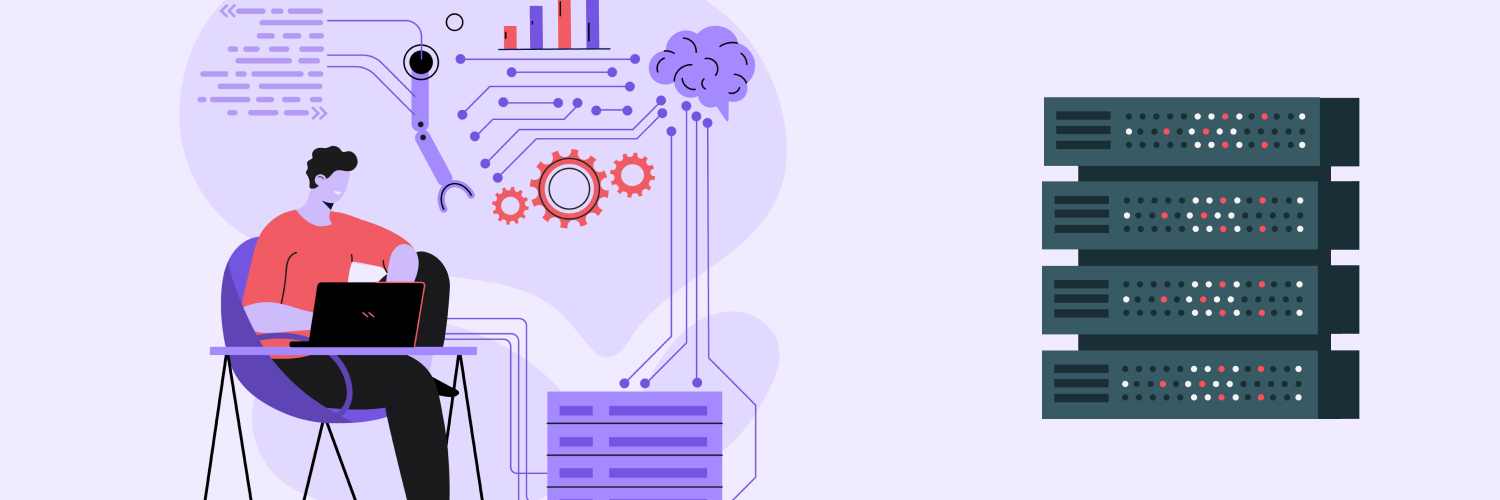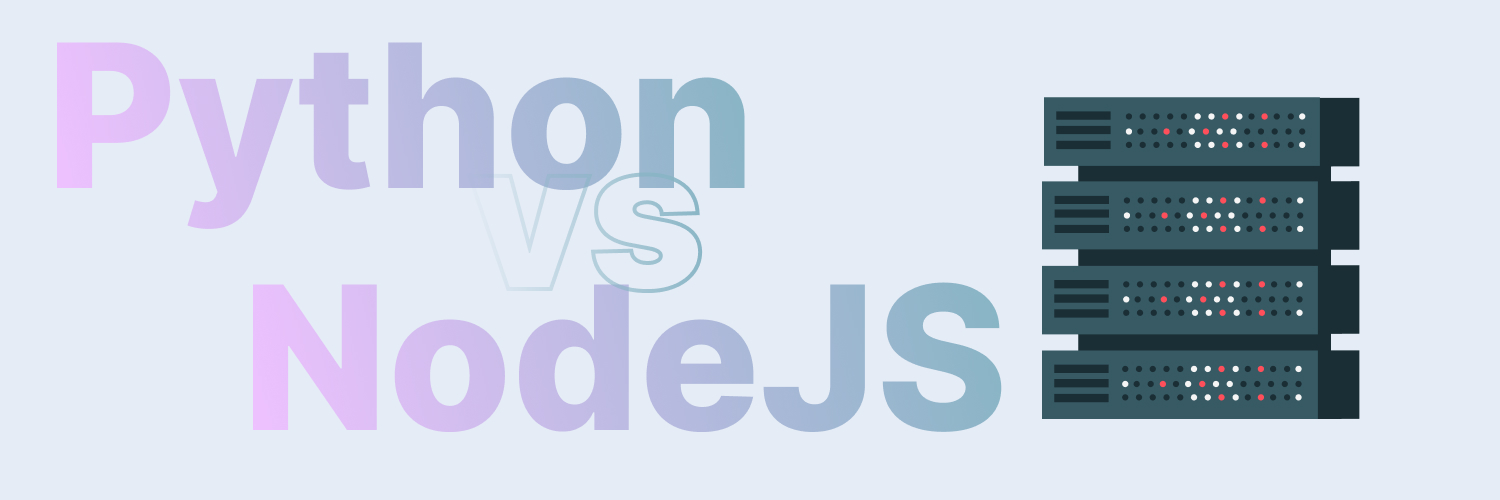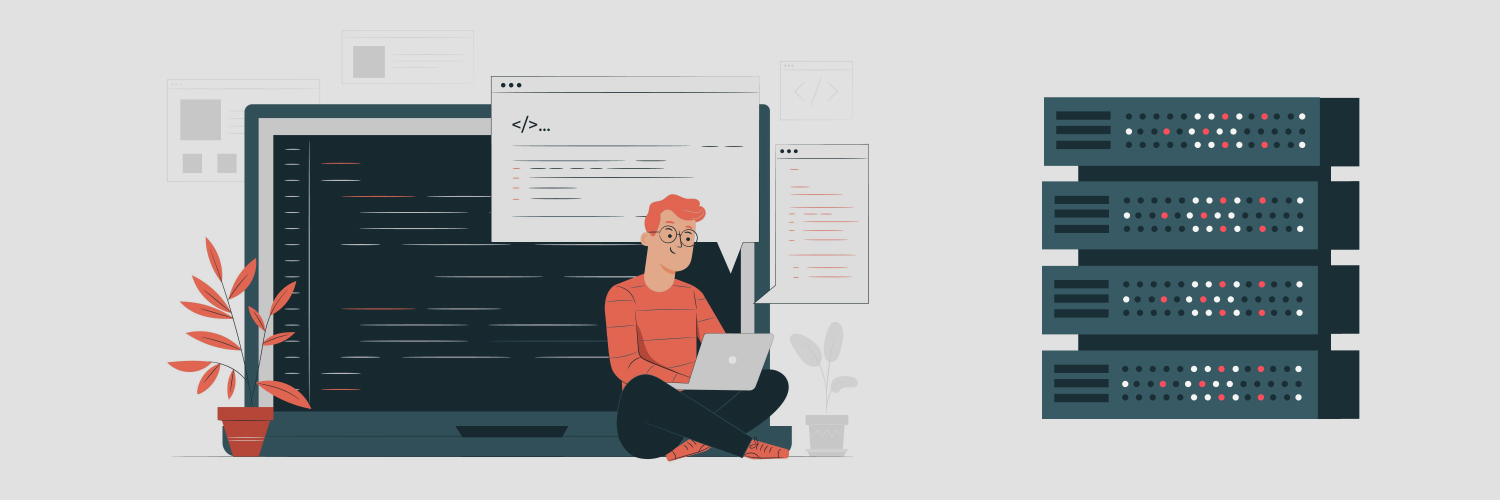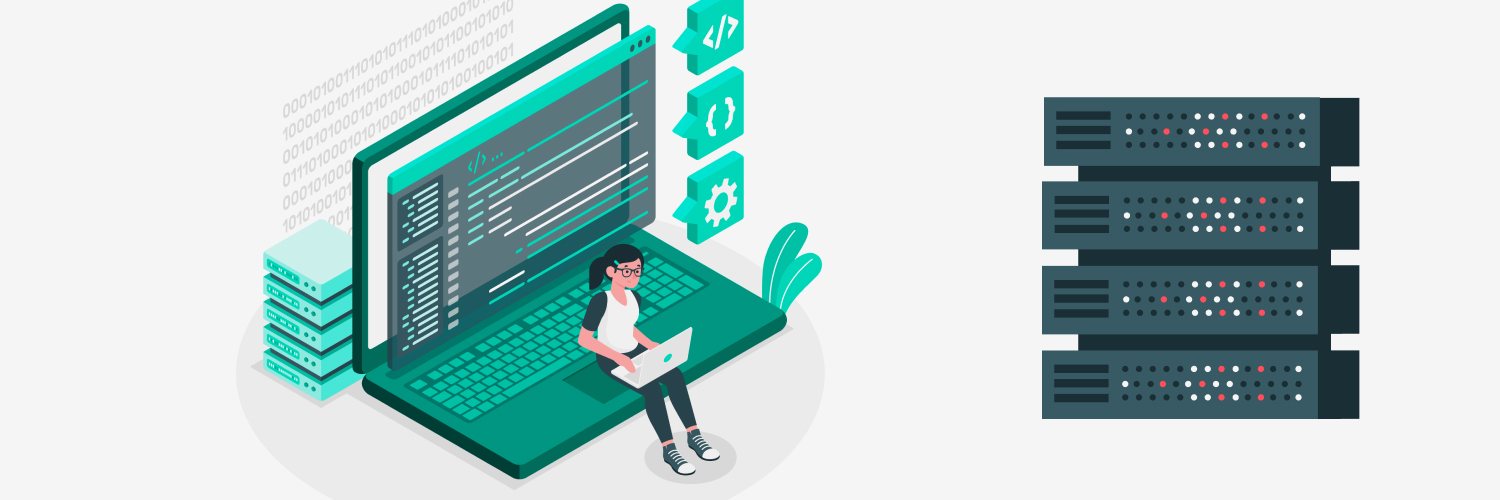The Ultimate Guide To Performing eCommerce Competitive Analysis Through Web Scraping
Observing how your competitors adjust to market shifts, bring innovation, and formulate strategies helps businesses thrive in the market. It also allows them to think ahead of their competitors and create deals they’ve been working on for months.
The common perception of performing competitor analysis is going through competitors’ social media pages and websites, seeing what they post. But you need to dig deeper.
Things are always dynamic in the eCommerce industry, so businesses must be proactive. For that, they need effective strategies to perform competitor analysis. Now businesses can perform a competitive analysis of eCommerce sites via web scraping bots, like the one Rayobyte’s Web Scraping API offers.
Web scraping is your secret weapon for your ecommerce competitive analysis. It is an easy way to gather a wide range of data from different websites and transmit it to spreadsheets and databases. If you’re not sure what web scraping is and how it can help you perform eCommerce competitor analysis, we’re going to make it easy for you. Feel free to use the table of contents to skip sections as needed.
What Is Web Scraping?

Understanding the ins and outs of web scraping or data scraping is crucial for eCommerce businesses. There is no place for companies hesitant to adopt the technology in this fast-paced world.
So what is web scraping? In simple words, it is a quick and easy way to extract data from multiple websites and organize it in spreadsheets for further analysis.
Before, it was only humans and computers. eCommerce businesses used to ask their employees to manually extract data from certain websites, transfer it to spreadsheets, and then perform analysis. The entire process took a lot of their time.
However, with the help of web scraping bots, you can now automate the monotonous or repetitive aspects of web scraping and crawling. The bot identifies and inputs data from your target websites all on its own, and it requires only a few clicks of your mouse to tell the bot what information you need.
The Importance of Competitive Analysis in the eCommerce Industry

Suppose you’ve just celebrated the first or second anniversary of your business. In that case, you may already be thinking: “why do I have to perform an eCommerce competitive analysis if things are going just fine?” Things might be in your favor now, but you can’t predict what the future holds for your business.
There’s a chance you may get knocked out of the market by a competitor, or your products/services don’t entice customers enough. Businesses must regularly do a competitive analysis to understand their competitors and formulate competitive strategies. Moreover, the competitive analysis also helps companies to identify their unique selling proposition (USP) that sets them apart in the market.
Apart from that, a competitive analysis also helps eCommerce businesses:
- Keep an eye on market trends
- Benchmark against their closest competitors
- Determine pricing trends
- Discover new ways to innovate
- Explore customer-dealing tactics
- Identify a market gap
- Make informed decisions
Besides understanding your competitors, this analysis also provides businesses with a clear path to further their functions.
Advantages of Using Web Data Scraping for eCommerce Competitive Analysis

Why should your eCommerce businesses use web scraping to do competitive analysis? The obvious answer is to extract data about your competitors. But that’s just not it; web scraping has other advantages, such as:
Price tracking and comparison
Many eCommerce businesses do competitor analysis to determine the pricing trends in the market. This helps them understand the consumer buying power, so they price their products accordingly.
Of course, manually researching and comparing every competitor’s prices would take days or months. Fortunately, using web scrapers to find and analyze particular price data categories can provide all the data you want within a few minutes.
Understanding the consumers
To always stay relevant to your target market, understanding consumer behavior and interest matter greatly. eCommerce data scrapers help businesses keep an eye on their target audience’s latest demands and trends.
Moreover, these scrapers can give you a list of your competitors’ offerings that you can use to get a better idea about the market. You can then see which products and services are performing better. Not only that, but data scraping also shows you a detailed view of the consumers’ sentiments. For example, what is the hot topic on social media, the latest trends, preferences, experiences, demands, and opinions?
You can then formulate your eCommerce strategies accordingly and offer consumers a better experience.
Increasing the conversion rate
Once you understand your target market clearly, you can more effectively turn them into your customers. With an effective web scraping tool, you can explore your competitors’ social media accounts and official websites to see what they are offering. You can also identify the points where they struggle.
By using this data, you can think and act proactively to avoid these issues from occurring in the first place. You can also scrape your competitors’ blogs and newsletters to understand the industry trends and social media strategies. This helps you shape your website content and design as per the consumers’ needs, so they complete their purchases and come back to you more often.
Performing SEO analysis
Since SEO analysis is at the core of every marketing campaign, web scrapers benefit eCommerce businesses in this regard too. These tools give you valuable SEO analysis data, including meta descriptions, keyword density, titles, meta titles, and the type of content. It’s better to target websites that rank high on search engines to get the most accurate data.
Once you find those websites, you can then pick out the SEO techniques they have used, add in your own company’s advantages that set you above the rest and implement them on your website.
What Do Successful ECommerce Businesses Analyze About Their Competitors?

The quantity of data can complicate things, which won’t give you desired results, so successful eCommerce businesses target specific points while performing a competitor analysis.
So, what are the eCommerce aspects they focus on? Here are a few:
Selecting the right quantity of “item specifics” for each category
A study on the top-selling items on eBay in 2019 reveals that the products with the highest Sell-Through Rates (STRs) in the Fashion category included eight “item specifics” on average. On the other hand, this figure was 10 for the Home and Garden category.
This suggests that eCommerce businesses must choose the correct number of item specifics for every category they sell in. They can also add another layer by gathering the same item fields that high-converting competing products use and executing that on their listings, such as color, design, model, etc.
Tailoring item description length
The same research found that listings with item descriptions of 304 words were linked to the highest STRs in fashion eCommerce marketplace categories. Meanwhile, the length was 397 words per listing for the Home and Garden category.
Successful eCommerce businesses collect data of high-performing listings and then tailor their description similar to their top competitors.
Modifying the layout to the perfect “text to visual” ratio
In the same study, 67% of fashion listings with the highest STRs had text and visuals, while 33% had only text. For Home and Garden listings, 80% of the highest STRs had text and visuals, and 20% were text-only.
This shows that Home and Garden consumers prefer both visual aesthetics and detailed descriptions. On the other hand, fashion consumers like visuals and enough information but don’t like to indulge in item specifics and descriptions.
Successful eCommerce companies identify what visual to text ratio and types of visuals work best in their industry by looking at competitors’ performances. This, in turn, drives conversions.
Analyzing easy marketplace entry based on geography
From the geographical aspect, Bay Germany had 38.3% highest Sell-Through Rates (STRs), while eBay Australia had 27.8% lowest STR.
This shows that entry for new sellers is easier in the German marketplace, meaning that it is an ideal market to roll out new items. The Australian market seems to be overcrowded.
This information about the industry and competitors help businesses avoid challenging markets while capitalizing on easier ones.
Learning which product categories are preferred by shoppers
The research showed that shoppers preferred health-related items (87.66%) and fitness (82.13%) the most, while diamond engagement rings (3.41%) and adult T-shirts (3.43%) weren’t a big hit.
People trust buying health and fitness-related items from eBay and don’t prefer certain clothing and jewelry. So, businesses can decide whether they should start a new product line or stop selling a particular product.
The data extracted through competitive analysis also helps companies track supply and demand in the market. This way, they develop profitable marketing strategies that appeal to the consumers.
It’s not just eBay; these aspects are also crucial for the competitive analysis of Amazon’s eCommerce platform.
How to Do Competitive Analysis in eCommerce Through Web Scraping

Once you’ve decided to do a competitive analysis of your own business, you can then move on to how to do it effectively. Here are some steps to help you shape your eCommerce competitive analysis:
Listing top 10 competitors
First, you need to list your top ten closest competitors to start your research. You can search on Amazon, Alexa, Yahoo, or other search engines and see which companies offer similar products or services. Remember to scrape data from competitors that:
- Operate in a similar business premise.
- Have a similar target audience.
- Are new to the marketplace.
- Are more experienced.
The best way is to put together a list of 10 diverse competitors to cover almost all types. What better way to do so than using a web scraping tool? Simply, nothing.
Organizing the data on a spreadsheet
The best part about using a web scraper is that you don’t have to care about the nuances of organizing your collected data. Instead, you can just let the bot transform the data into spreadsheets and organize it into relevant tabs.
Since this sheet can be shared and updated anytime, you don’t have to worry about mismanagement. While using a web scraping tool, ask it to categorize the collected data according to:
- Product offerings
- Price ranges
- Strategies used for generating leads
- Social media engagement techniques
- First-time visitor discounts
Determining the types of competitors
To make the entire eCommerce competitive analysis process more manageable, you can also use the web scraping tool to categorize your competitors into three types. These include:
- Direct competitors: These are the primary competitors that offer similar products to a similar target audience as you, such as McDonald’s and Burger King.
- Indirect competitors: Secondary competitions sell similar products to a different target audience — for example, Victoria’s Secret and Target.
- Tertiary competitors: Although these are not a direct threat to you, they have the potential. Tertiary competitors are related brands that may sell to the same audience with different products. Examples would include Gatorade and Under Armour.
Identifying the positioning
Positioning is a crucial step in marketing. It helps businesses connect to a target audience and build trusting long-term relationships with them. Correct positioning reflects your brand message and values in the best way possible.
Web scraping can help identify your competitors’ positioning. Then you can formulate strategies to stand out from the crowd and fill in the potential market gap. You increase your brand awareness and establish a loyal customer base when you position yourself correctly.
Your web scraping bot most probably extracts data from these channels to determine your competitors’ positioning:
- Product copy
- Website copy
- Social media
- Interviews
- Press releases
- Events
After scraping relevant data from your competitors’ positioning, you can evaluate your strategies based on these questions:
- How do they convey their brand message to customers?
- What positioning strategies do they use?
- How do they describe their company?
- What’s their unique value proposition?
Evaluating competitors’ unique selling proposition (USP)
The next thing to look for is your competitors’ unique advantages and USP. For years, companies have been built on a competitive advantage or some agenda that helps them move towards it.
You can take the example of an experienced online teacher. They market themselves through their 20 years of teaching experience and build a customer base. This USP is not easily copied by any other competitors, and people start to recognize it.
You can use a web scraping tool to extract your competitors’ unique advantages and then compare them to your own. You can also read consumers’ discussions of Reddit about a specific brand and see why people buy its products. Once you learn about their competitive advantage, you can figure out how to offer something better.
Performing a SWOT analysis
You can now end your eCommerce competitive analysis by conducting a SWOT analysis. This helps you list your company’s strengths, weaknesses, opportunities, and threats. Companies perform a SWOT analysis to dive deeper into their competitors’ strengths and weaknesses and compare them to theirs. They can improve their business functions, focus on grabbing the right opportunities, and eliminate any threat.
While evaluating strengths and weaknesses in SWOT analysis, you should focus on scraping data of your competitors’:
- Product offering
- Unique selling propositions
- Market share and position
- Assets
- Partnerships, acquisitions, mergers
- Intellectual properties
- Number of employees
The other two elements, opportunities and threats, are usually uncontrollable. You can’t avoid them, but you can manage them with certain strategies:
- Competitors’ services or products
- The economic stability
- Market trends
- Consumer behavior
- Market size
Most companies making considerable profit often ignore SWOT analysis. But all companies should perform a SWOT analysis (at least) annually to check the market landscape and consumer trends.
Proxies for Web Scraping: Are They Important?

Using proxies makes the entire web scraping process easier. Since many websites have access restrictions from certain IP addresses, it’s essential that you opt for the best residential, data center, or rotating proxies.
If you’re looking for options, you’re already at the right place. We offer effective and valuable proxies that allow you to scrape data wherever and whenever you want, without revealing your real IP address.
The two types of proxies that you must look for are:
Rayobyte residential proxies
Your web scraper can use our Residential Proxies to explore beyond geographical and low request rate restrictions. That’s mainly because our residential proxies are available in more than 130 different locales.
Moreover, these proxies come with API access that efficiently facilitates the entire web scraping process. They allow you to use the IP address of a home other than yours.
Rayobyte data center proxies
Businesses searching for data center IPs can get help from our Data Center Proxies, enabling web scrapers to route numerous requests. These proxies work in 34 data centers present in 17 different countries, having more than 300,000 data center IPs and 20,000 subnets.
Conclusion

eCommerce competitive analysis is an effective strategy for identifying market trends, scaling up a business, moving a step ahead of the curve, and establishing meaningful and long-term relationships with your customers.
Web scraping helps businesses extract data from their own and competitors’ websites within a few minutes, making competitive analysis easier than ever. If you’re still reluctant to do it yourself, you can let Rayobyte’s Web Scraping API do the scraping for you!
A don’t forget to mask your IP address with a proxy. Rayobyte offers residential and data center proxies that allow web scrapers to perform their jobs more efficiently.
The information contained within this article, including information posted by official staff, guest-submitted material, message board postings, or other third-party material is presented solely for the purposes of education and furtherance of the knowledge of the reader. All trademarks used in this publication are hereby acknowledged as the property of their respective owners.






